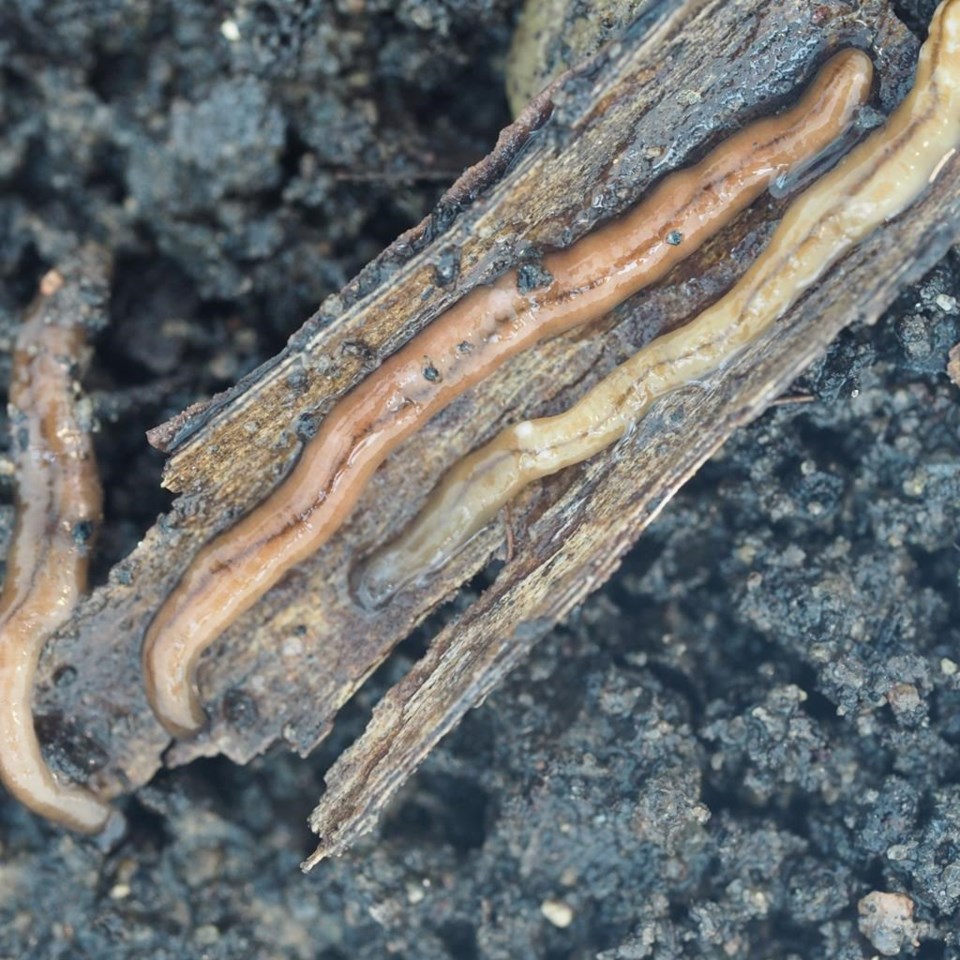MONTREAL — An invasive worm species from Asia that secretes a dangerous, paralyzing toxin has been spotted in the Montreal area.
Lisa Osterland, a retired teacher, found some twenty hammerhead flatworms earlier this week while removing slugs that were eating flowers in her garden in Westmount, Que., a municipality on Montreal Island.
She didn’t recognize the invertebrate until she came across a CNN report a few days later indicating that hammerhead flatworms were spreading across the state of New York.
"The shape of the worm was the same as what I saw" in the garden, Osterland told The Canadian Press.
The retiree said she collected the worms at night, when they seemed to be most active, and then handed them over to a team of entomologists at the Université de Montréal. Among them was Étienne Normandin, who said the team received about 20 specimens from Osterland.
"There's a rule among biologists that when you find a specimen of an invasive species, you can multiply it by 100 to estimate the population," he said. "We're up to around forty specimens observed in recent years in Quebec, if not more. So we can estimate that the hammerhead flatworm population is in good health."
A few sightings of hammerhead flatworms have been recorded in Gatineau and Montreal in recent years, but this is the first time that so many individuals have been reported in Quebec.
Normandin described their proliferation as a cause for concern, not least because they secrete a paralyzing toxin, tetrodotoxin, "one of the most powerful molecules in the biological world" and "the same molecule produced by pufferfish."Â
"If a young child puts soil in his mouth and ingests a flatworm or two or more, there's a real risk of damage,” he warned. “If ingested, it's a toxin that will first attack the perioral region, i.e. the face, the tongue and everything in the esophagus."Â
"In such a case, the child needs to be hospitalized very quickly.”
Hammerhead flatworms are also a danger to birds, dogs and other animals that frequent gardens, as well as to soil biodiversity.
The invasive species has no local predator and preys on slugs, snails and millipedes, Normandin explained — species that, he said, "provide a very important service, which is the recycling of organic matter." The worm can therefore threaten ecological balance.
Its "negative impact on soil invertebrate communities" has already been observed in France, the entomologist noted.
"We're slowly seeing the long-term effects of this," he said. "We can expect similar damage to our soil fauna over the years."
The worm originated in Asia and was probably transported to North America on cargo ships carrying plants, Normandin said.
"Often it's found in well-off neighbourhoods," he said, citing Westmount as an example. "In these neighbourhoods, we often have a lot of landscaping, we have exotic species of plants that are beautiful" and imported from other countries.
The hammerhead flatworm was first observed in Montreal in 2018 by a member of the Université de Montréal entomology team, but Normandin theorized it may "already have been established in the neighbourhoods around Mount Royal," the large wooded hill in the heart of the city.
According to Environment and Climate Change Canada, invasive species can cost the global economy billions of dollars every year through negative impacts on forest productivity, agriculture and fisheries, as well as through measures to control their spread.
Such species represent an "emerging threat to northern Canadian ecosystems as climate warms and species intolerant of current northern climatic conditions expand their ranges," Environment and Climate Change Canada states on its website.
Traditionally, when an invasive species arrives from Asia, "the Quebec winter will kill it," Normandin said. But now, higher average temperatures due to climate change "(offer) a species like the hammerhead flatworm an extra chance to develop."Â
In an email exchange with The Canadian Press, Quebec’s Environment Department indicated that because, "at present, (it) is not tracking this species," its "potential to establish itself sustainably in Quebec and the impacts it could have have not been assessed."
This report by The Canadian Press was first published Aug. 19, 2023.
Stéphane Blais, The Canadian Press




